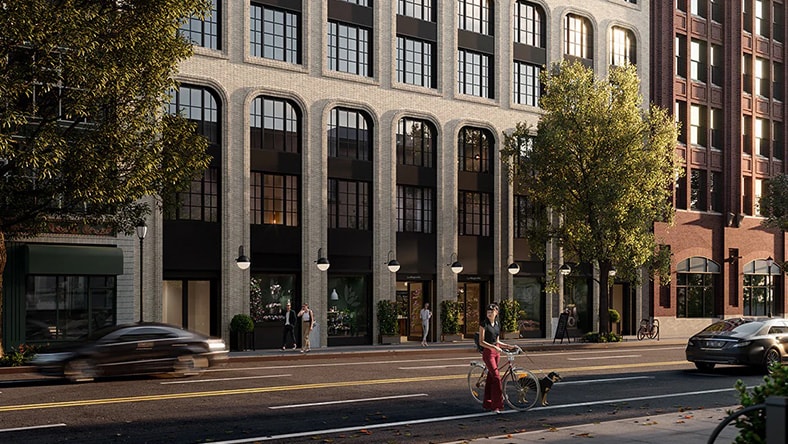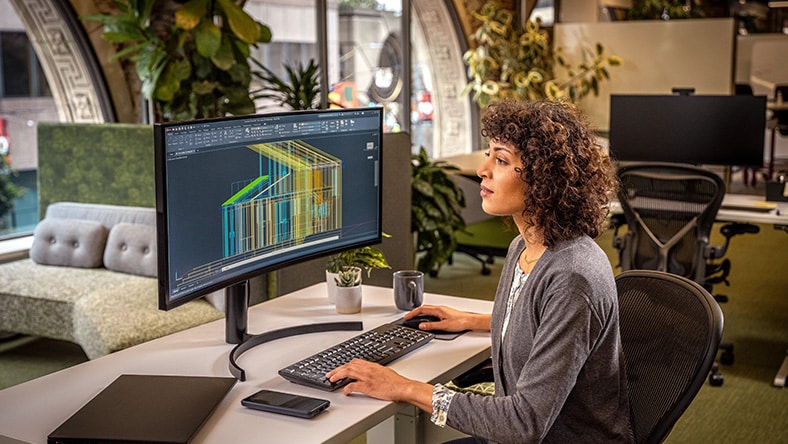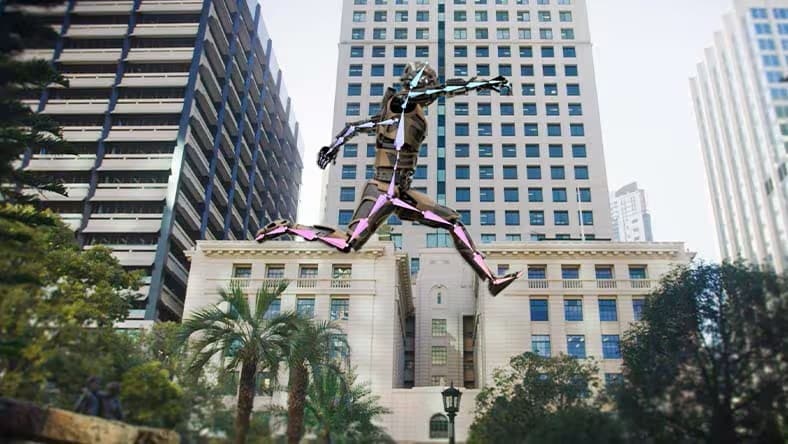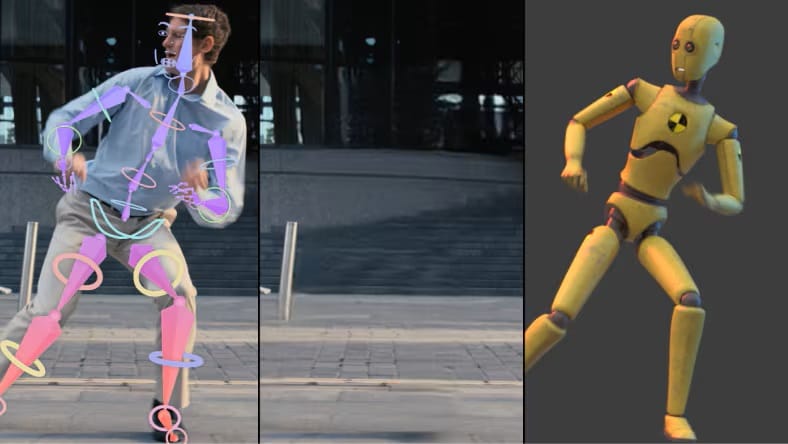& Construction

Integrated BIM tools, including Revit, AutoCAD, and Civil 3D
& Manufacturing

Professional CAD/CAM tools built on Inventor and AutoCAD
In the world of startups, a strong brand presence on social media can put your business on a different level from your competitors. The way you share what you do, tell stories about your teams, and even educate your customers can turn your social media presence from average to show-stopping.
No matter if you’re in the architecture, engineering, or entertainment industries, you can set yourself apart by using 3D visuals, models, and animations in your social media posting. This way, you're not just sharing regular images and videos like every other company. You are using unique assets and technology that make your audience stop scrolling and pay attention.
Let’s look at the benefits you gain from using 3D visuals in your social media marketing.
With attention spans growing shorter, every business needs to put in effort to get viewers’ attention on social media. 3D visuals offer an interactive, dynamic element that can keep them engaged. Unlike illustrations or 2D drawings, 3D social media posts draw viewers in, giving them a chance to explore designs from multiple angles. This makes it more likely that they remember, learn from, and engage with your posts.
Image courtesy of Tait Towers, Inc.
3D visuals can also enable better storytelling than 2D images and videos. For example, if you're an architecture or construction startup, you can share a virtual walkthrough of a building. This way, your viewers can see every corner, feature, and detail of your work. Similarly, design and manufacturing startups could show how a product is assembled or how it works in various simulations. This tells viewers more in less time and keeps them engaged and interested in your content.
Sharing high-quality social media 3D images is more than just an aesthetic decision. It can be a strategic move that impacts how your startup is perceived on the market. If you consistently publish visually engaging 3D models and designs, it signals that your company values innovation, creativity, and technological sophistication.
Image courtesy of Tony Studio
Sharing 3D social media posts presents a level of transparency and openness that other images can't match. This not only captivates your audience but also reflects positively on your brand’s willingness to demonstrate what you do. Whether you're a Bollywood filmmaker showcasing early-stage character designs or an urban architect sharing digital twins (US Site) of a project, 3D visuals communicate creativity and precision that can attract not just viewers but also potential customers, collaborators, and investors.
Image courtesy of Workshop/APD
Here’s an overview of how some companies have used 3D visuals on social media to enhance brand presence and differentiate from competitors.
Steelcase, a leader in office furniture making, uses 3D visuals to communicate complex concepts, e.g., the ergonomic benefits of a chair. They share realistic models of office layouts and furniture on platforms like Instagram and LinkedIn, helping potential customers imagine Steelcase products in their spaces without the need for physical showrooms. By creating 3D representations of workplaces, Steelcase shows how their furniture enhances productivity and collaboration.
Image courtesy of GANAS MFG
Wētā FX, known for groundbreaking visual effects in movies like The Lord of the Rings and Avatar, uses 3D models to promote their work on social media. Their posts often include behind-the-scenes looks at how iconic scenes were made using 3D rendering and animation. By showcasing models of creatures, environments, and characters, Wētā FX allows followers to see the careful detail and creativity involved in each production. This does more than market Wētā’s services; it inspires aspiring filmmakers and creatives worldwide.
Image courtesy of Chocolate Tribe
The Quay Quarter Tower in Sydney is a great example of how 3D visuals can reinvent an architectural project. Its designers used 3D models and animations to present their vision for the building to stakeholders, government bodies, and the general public. These 3D social media posts offered fly-through animations and interactive models that allowed people to explore the building before it was even built. Sharing 3D visuals on platforms like LinkedIn and Twitter created buzz and excitement around the project, which helped secure public approval and investor confidence.
Wonder Dynamics powerful AI-toolset Wonder Studio empowers creators and artists to focus more on the iterative and creative aspects of storytelling. You can turn your footage into live-action animated films, commercials, music videos, and more with AI-powered Wonder Studio.
Replace live actors with 3D characters and seamlessly capture facial, body, and hand movements with Wonder Studio's AI mocap technology. Get complete motion capture data for your project in USD or FBX formats, with advanced character bone retargeting and export-ready animations.
Gain ultimate flexibility for precise character placement and movement control with the Camera Track Tool. Match movements of a virtual camera to real-life scenes for realistic alignment and motion and detect the planes within your scene using Point Cloud.
Export selected project elements enabled during Render Setup. From Clean Plate, to Camera Track, and Alpha Masks, customize and download your desired outputs to see exactly what you need for the creative task at hand.
2D and 3D CAD tools, with enhanced insights, AI-automations and collaboration features. Subscription includes AutoCAD on desktop, web, mobile and seven specialized toolsets.
As we’ve seen, 3D social media posts can be great assets for enhancing any startup’s social media. Below are a few best practices to keep in mind.
When incorporating 3D visuals, avoid overwhelming your audience with too much complexity. Keep it simple and focus on the message you want to convey. If you're showcasing a product, emphasise the most important features and avoid cluttering the scene with unnecessary elements.
Different social media platforms have different formats and user expectations. For instance:
Social media moves quickly. If your 3D visuals take too long to load, users will scroll past. Keep your file sizes small and optimise your models for fast loading without compromising on quality. Many 3D modelling software offer ways to export models with reduced file sizes. Take advantage of these to ensure your visuals load quickly on all platforms.
People love to see the process behind the product. Instead of sharing only the final 3D model, consider showing snippets of your design journey. This could be a time-lapse of a model being created, going through iterative design, or a behind-the-scenes video of how you use 3D software to bring your ideas to life.
By adding 3D social media posts into your digital marketing strategy, your startup can stand out in a crowded space and position your brand as a leader. Whether you're in AEC, design and manufacturing, or media and entertainment, incorporating 3D content on social media will help your startup build a stronger, more engaging presence.
Start simple and experiment with different formats, lengths, and software tools. Always keep your audience in mind, considering what they’d most like to see or learn about your business. With the right 3D marketing strategy, your startup can grow your audience and leave a lasting impression on potential customers and stakeholders.
Call 000-800-040-2543 (9:30 AM to 5:30 PM India local time) if you need our assistance.
No matter what industry you create 3D models for, we provide students, educators and educational institutions courses and resources to uplevel your skills.
This course takes you from interface to integrated pipeline. Learn the fundamentals of animation to get up to speed with Maya.
Get started with 3D product design and learn the basics of Fusion for computer-aided design and manufacturing.
For architecture startups, 3D walkthroughs, interactive floor plans, and AR models that allow users to place buildings or designs in their real-world environment work best. These help clients visualise the end product more clearly.
For manufacturing startups, 3D visuals can show product designs, prototypes, or assembly processes. You can use animations to explain how your product works or highlight key features that differentiate it from competitors.
For media and entertainment, 3D animations, character designs, and visual effects are the most engaging. Show behind-the-scenes looks at the creative process or highlight special effects in your projects using time-lapse videos or 3D animations.
Creating 3D visuals can range from affordable to costly, depending on complexity. If you're just starting out, there are free or low-cost tools like Tinkercad (US Site). As your business grows, investing in advanced software like Autodesk Fusion can be worth it.
Not all platforms support native 3D model interaction, but most allow for sharing 3D visuals in video or image format. Platforms like Facebook and Instagram support interactive 3D models, while others may require converting models into videos or images.
Track engagement metrics like likes, comments, shares, and click-through rates. You can also look at audience growth and see if 3D social media posts lead to more website traffic or conversions, like sign-ups or sales.
Yes! You don’t need a big budget to start using 3D visuals. Tools like Tinkercad are free, and simple 3D animations or models can be just as effective as more complex content when shared strategically.










